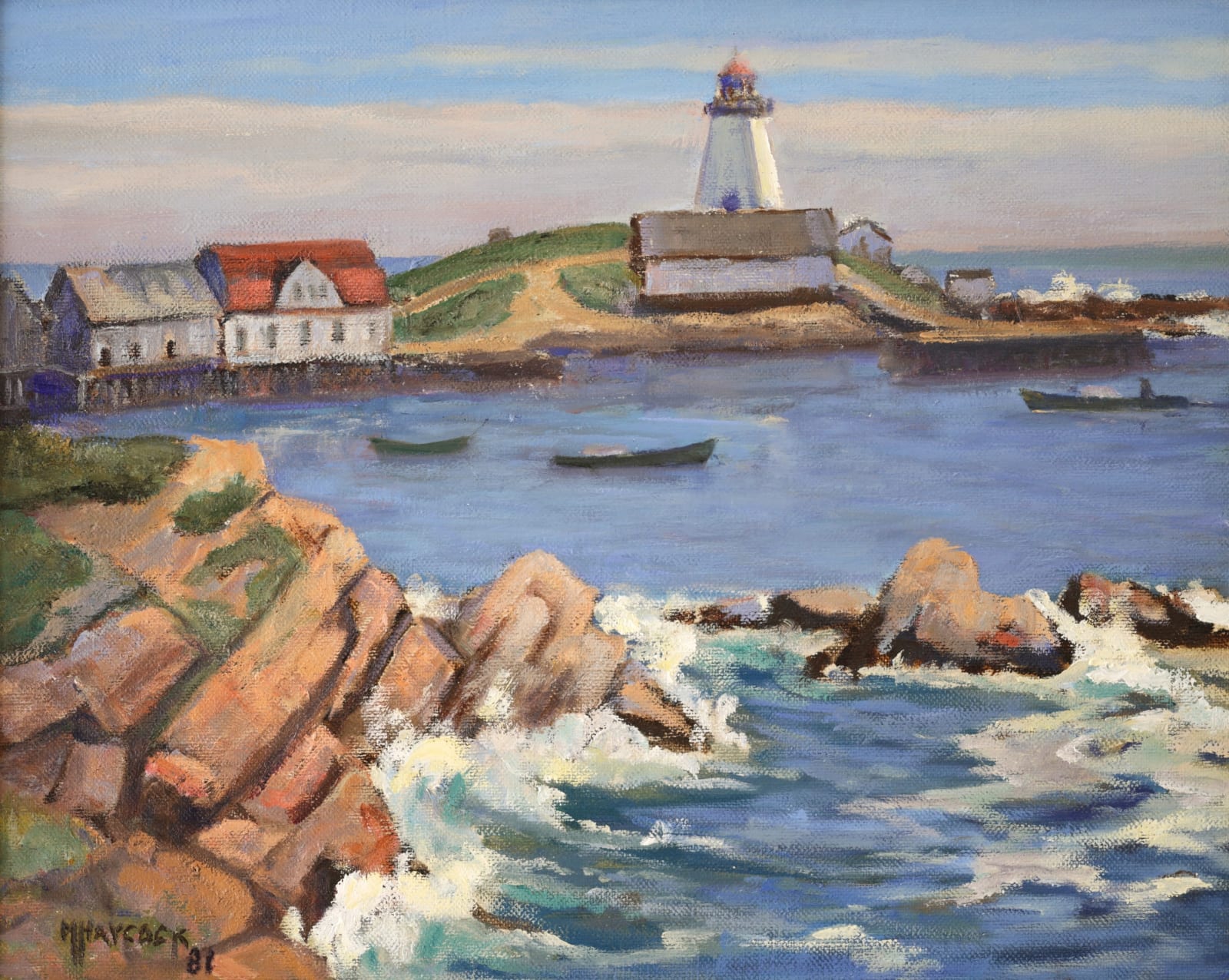Maurice Haycock Canadian, 1900-1988
Further images
Maurice Hall Haycock (1900–1988) was a Canadian polymath, trained as a geologist, mineralogist, photographer, musician, historian, and, ultimately, a celebrated painter. Born in Wolfville, Nova Scotia, he earned a BSc and MA in Geology from Acadia University, followed by a PhD in Economic Geology and Mineralogy from Princeton University in 1931. Returning to Canada, Haycock joined the Department of Mines in Ottawa, where he worked until retiring in 1965. His scientific contributions included establishing a mineralogy section and having a newly described mineral, haycockite, named in his honor.
A pivotal turning point in Haycock’s life came during a geological expedition to the Arctic in 1926–27. Immersed for a year in Inuit communities near Pangnirtung Fiord on Baffin Island, he developed a deep connection to the North. On his return voyage aboard the ship Beothic, he met Group of Seven artist A.Y. Jackson—an encounter that ignited his passion for painting. Encouraged by Jackson, Haycock took up watercolor, pastel, and later oil painting, soon joining him on sketching trips across the North. Over the next four decades, Haycock painted extensively throughout the Arctic, capturing landscapes, historic sites, and moments of exploration with both scientific accuracy and emotional resonance.
In Neil’s Harbour, Haycock distills coastal life into a scene of calm intimacy. The painting is characterized by solid, clear forms, rooftops, rocky shoreline, a lighthouse, balanced by fluid, open treatment of sea and sky. His palette is muted yet warm, combining soft blues and earthy tones that evoke early morning or dusk. The overall feel is peaceful and reflective, suggesting both the resilience of human structures and the beauty of their natural setting.
Provenance
- signed, titled and dated on reverse- painted October, 1981 from a 1951 sketch






